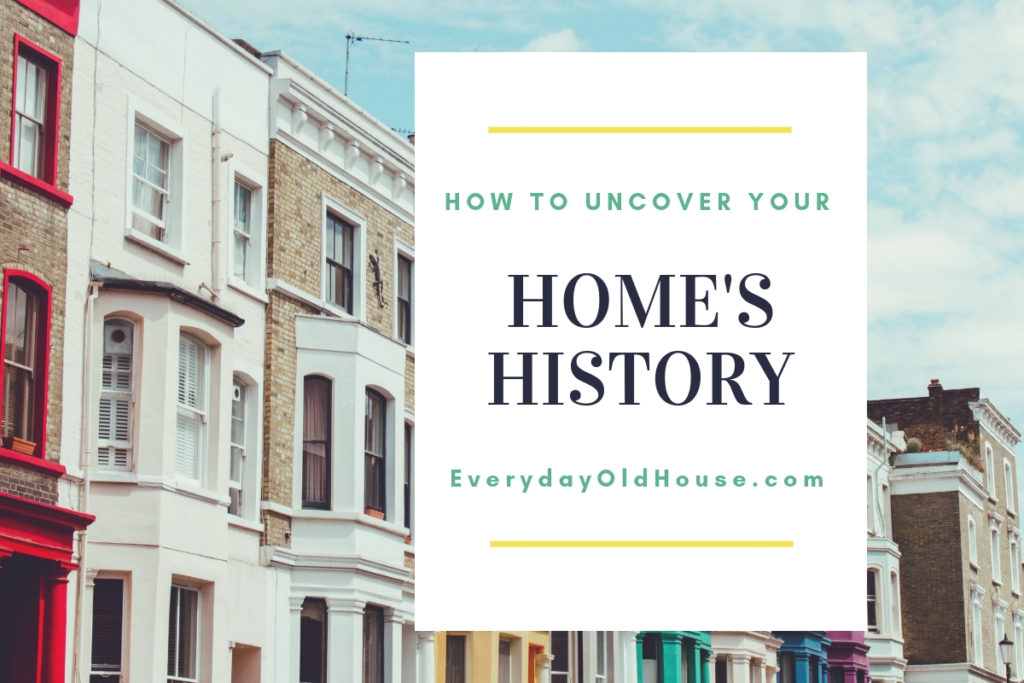Wouldn’t it be awesome to find old photographs of your house? See what your neighborhood used to look like? Old photos of your home can tell you what color your house used to be, how the porch used to be decorated, or what it looked like before additions were built. Here’s 12 free places to find old photos of your home.
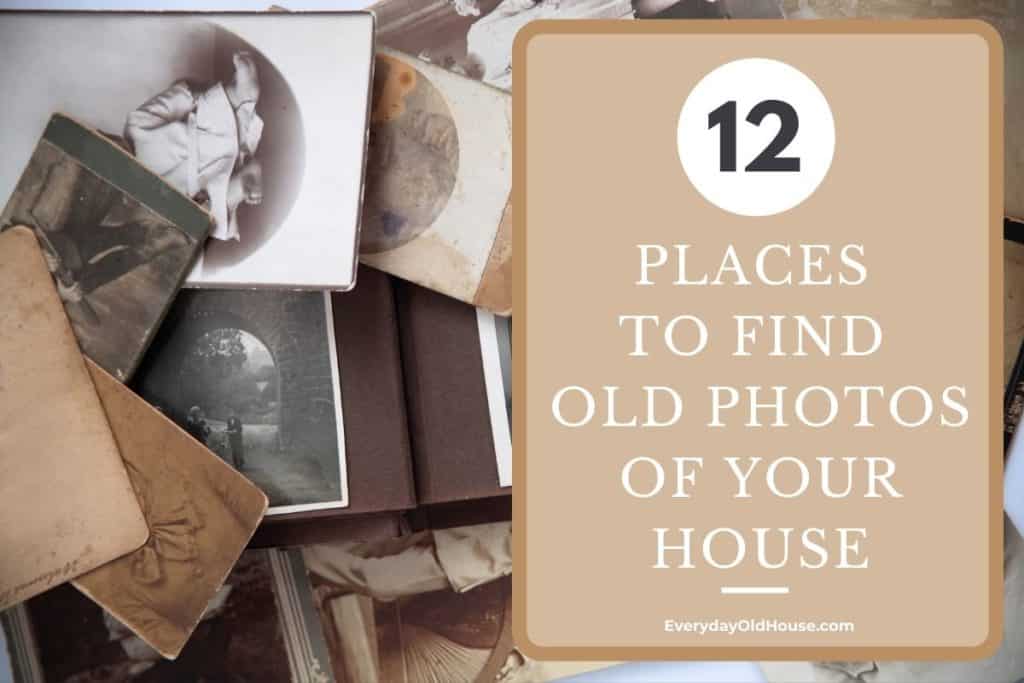
My Experience
While I am an average homeowner with an old house, in a previous career I researched the history of 100+ commercial properties for property owners, potential buyers and real estate developers – from digging into public records, to interpreting Sanborn maps, and interviewing local experts.
BUT one of my favorite parts of the research was finding old photographs.
Where Can You Find Old Photos of Your Home For Free?
Below are the 12 best places I discovered to find old photos of your home to help research the history of your house. Some sources are online, while some require you to put on some shoes and hit this sidewalk.
Good news – All of them are free, but some aspects of the search may require a small cost (for example, a printed photo). AND I’ve included a free printable checklist at the bottom of this post to make your research go faster and easier…..
There’s no guarantee these resources include old photos of your home, BUT it’s this is the best way to find a visual history of your house. It’s worth a shot, right? And let me know if you find other sources….
1. Local Historical Society
You local historical society is potentially a treasure trove of old photographs. These organizations collect, organize and store historic documents, artwork, and items that are relevant to local history.
Local historical societies amass their collection of historical photos through purchase or donations through commercial and public agencies. Or even simply from a family who discovers a cache of old photographs and memoirs while cleaning out a deceased member’s attic.
And those photographs could include your house or its previous owners, like this photo from this active historical society in Downers Grove, a southwestern suburb of Chicago. Wouldn’t it be great to move into your new home, reach out to your local historical society and receive a photo like this?
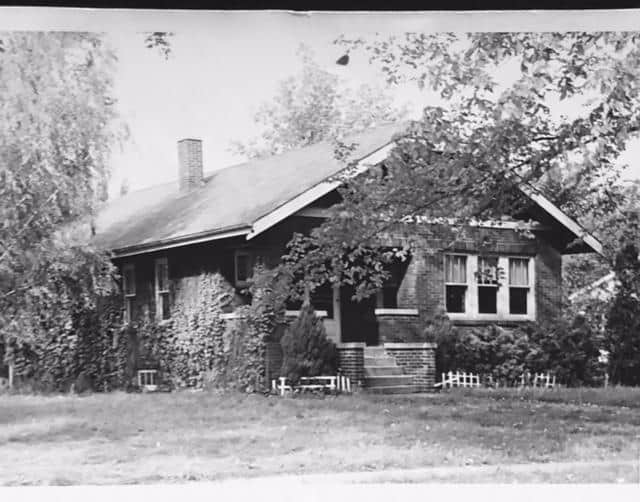
2. Local Historical Commission
While the local historical society is a non-profit, volunteer run organization, most towns also have a local historical commission created through the town’s bylaws.
These commissions are usually charged with protecting and preserving the town’s cultural character and assets, be they archaeological sites, historic buildings, open spaces, landscapes, or historic districts.
To identify which places fall under the commission’s jurisdictions, many towns have commissioned surveys. And these surveys usually contain photographs…
Note that many times a copy of the survey can also be found at your local library. Which brings us to…
3. Local Library
Most local libraries have a dedicated local history room or area. These archives usually contain collections of old books, newspapers, directories, maps, photographs.
Local history collections are diverse and can be difficult to navigate. Some resources might not even be indexed, like old newspapers. Or worse, still be located on microfiche or microfilm – yuck! If you were in middle or high school in the 1980s, you know what I’m talking about….
This can lead to a lot of wasted time and effort if you don’t know what you’re doing. Before you start digging into the archives, first reach out to one of the best people to interview about your home’s history – the reference librarian.
Rely on their years of expertise – they will know exactly where to look (and not look).
But the search could result in hitting gold. But example, digging through newspapers have a huge potential to finding a photograph of your house if you live near the town square or along a main road, or parade route.
Below is a photo I discovered on my local library’s digital archives of a house I regularly drive by. You never know what you’ll find online when given a few minutes!

4. Neighbors
While at first thought, it sounds a bit skeevy that a neighbor would have a photo of your house.
But think about it for a minute.
Maybe they have a photo from a neighborhood block party. Or maybe their little Jimmy was friends with Johnny who lived in your house – and there’s a fantastic photo of them in their Halloween costumes standing in front of your house.
Which of your neighbors probably has the oldest photos of your home? The retirees that have lived in your neighborhood for decades.
Growing a relationship with your neighbors not only can teach you about the history of your old house (i.e. who lived there, who died there) but also help create a safer home from theft.
5. Previous Owners
The previous owners very likely have a plethora of old photos of your home. But how do you find them?
A few ways, including your neighbors – perhaps they are still friends have their contact information. Send a polite and non-intrusive letter to ask for information and if they have any old photos of your home. And if they can’t scan and send to you to print, offer to reimburse for copies.
Another way to contact previous owners for old photos of your home is through the next resource, Online Community Groups….
6. Online Community Groups
Search and join online community groups and social media such as Facebook dedicated to local history of your area.
Scan through the posts to find photos of your neighborhood, read through memories shared by townfolk, or find ideas on additional resources to research your home’s history.
I actually found previous owners through a local Facebook group. Unfortunately they didn’t have any photos they were willing to share, but they shared stories of growing up in the house. (And I found out who was responsible for the “I love Michael Jackson” scrawled in hot pink ink in the back of a tiny bedroom closet). It was still a great way to have conversation about the history of our home.
7. Historic American Buildings Survey [HABS]
In the mid-1930s during the Great Depression, the federal government authorized a nation-wide survey to document the nation’s architectural legacy.
This Historic American Building Survey put architects and photographers to work surveying historically significant homes across the country. And continues today to collect information on historic houses.
There is a chance that your home or neighborhood is included in this online database.
8. Vintage Postcards
In the early 1900s, cameras became commercially available to the general population.
And like most technology, it quickly grew popular. People would snap a photo of various places, including their homes, convert them into postcards to send to family and friends.
This postcard c1910 of a street in Little Falls, NY was discovered on eBay by a woman who currently lives in one of the house shown. Look at it closely. Honestly, I can’t tell if it’s a drawing or a true photo. Regardless, it shows amazing visual details of the neighborhood.

To search for postcards, check out your local antique store or various re-sale websites such as ebay and Etsy.
BEGINNER’S GUIDE TO HOME HISTORY RESEARCH
Interested in researching the history of your old house but unsure where to start? Grab my newly-release:
Beginner’s Guide: How to Trace the History of Your Old House
This 60-page guide takes you step-by-step through 25+ online and in-person resources to create a picture of your home’s history.
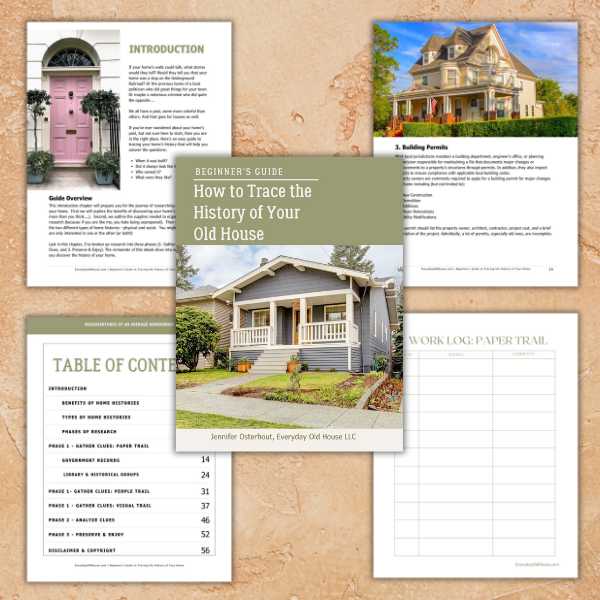
9. What Was There
The next few options are online databases with powerful search engine to find a photo of your home. This first one, WhatWasThere, has the impressive goal is to “weave a photographic history of the world”.
How does it work? It invites the average person to upload their old photos through a series of short easy steps. The photos are then linked to the geographic location on Google Maps for all to explore and learn.
In essence it’s a virtual time machine.
And its potential is pretty spectacular. (in my humble everyday person opinion…)

While I didn’t find any photos of my neighborhood on this site, I’ll admit I spent a huge amount of time having fun exploring familiar neighborhoods and browsing photos.
10. Genealogy Websites
Genealogy websites have databases brimming with old photos. For example, Ancestry.com has a U.S., Family Photo Collection, c. 1850-2000 online database that is a collection of customer-submitted ancestral and relative photos. (Ancestry also had a postcard section).
Photos are primarily of individuals and families. BUT a lot of these photos were taken in or around their homes.
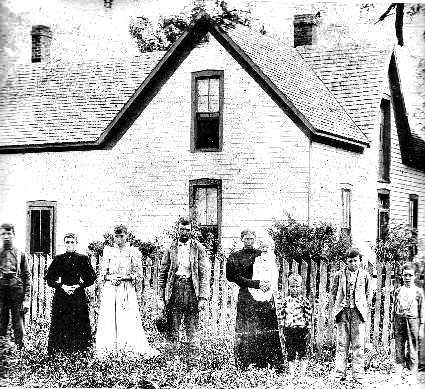
Note that these websites are more person than address driven, so you would need to know basic information (names, birthdate) of previous owners of your house to do a search on these types of websites.
Subscriptions are usually needed to explore genealogy websites like Ancestry. BUT check with your local library. My local library had a free subscription I could borrow.
11. HouseNovel
HouseNovel is a free home history website that allows folks to easily discover and share home history across the United States. It’s a user-generated platform that anyone can use to upload home photos, information, and stories on an interactive timeline on a Google Maps template to see a home’s full story unfold before your eyes.
Think Zillow meets Ancestry.com!
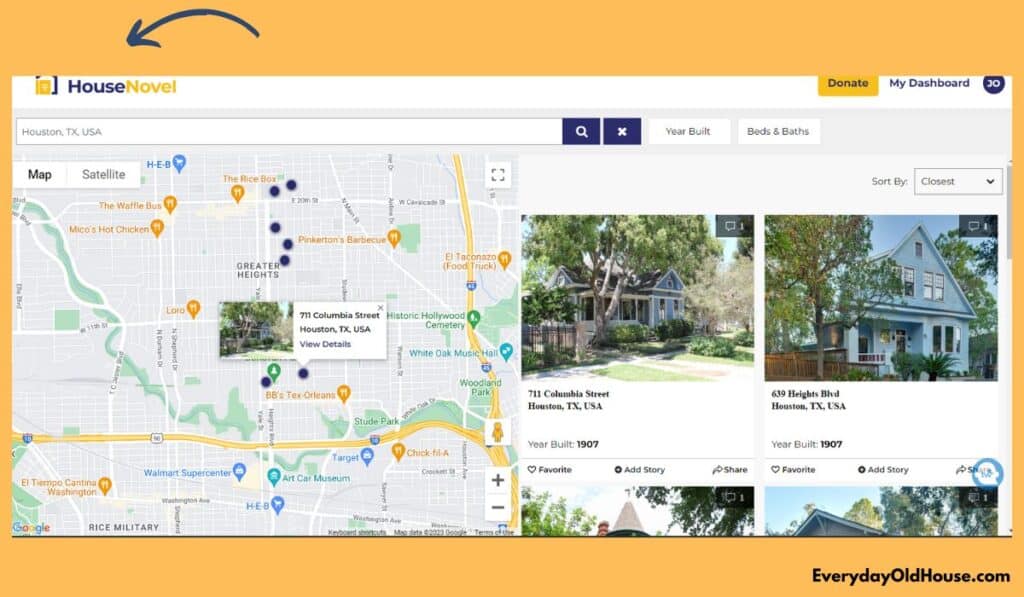
So far HouseNovel has over 20,000 homes recorded nationally, and growing every day.
12. Vintage Aerial Photos
While vintage aerials can’t provide a street-level detail about your home, aerial photos can provide a clear and straight-forward timeline to how your neighborhood was built. While I dive deeper into vintage aerials further here, the below 3 options are a great way to start.
Historic Aerials
Historic Aerials gives you access to the largest collection of historical aerials in the United States with decades of data. It’s technology allows for amazingly high-quality accuracy to help you pinpoint the location of your home fairly easily.
It’s free to browse the viewer to find your home, but physical prints are purchase only.
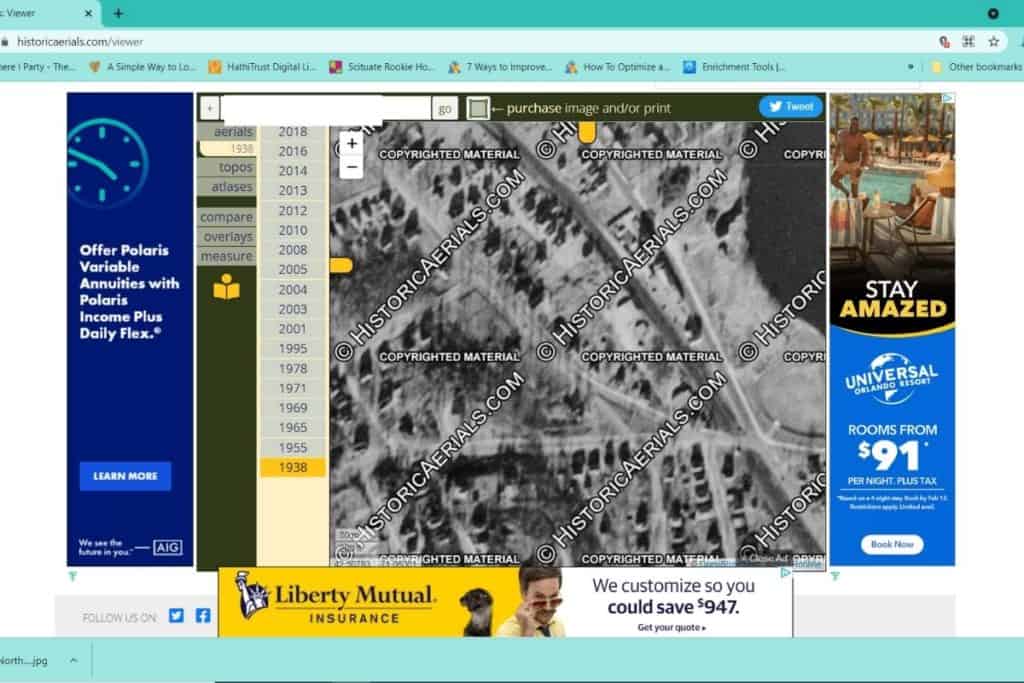
Vintage Aerials
Another resource, Vintage Aerials, focuses on historical aerials of rural communities and small farms. So if you live in a rural area, this is the best place to start.
They host a collection of over 18 million photographs that span the second half of the 20th century, documenting a time in American history when life revolved around rural farming communities and small towns.
Like Historical Aerials, free to browse, physical prints have a fee.
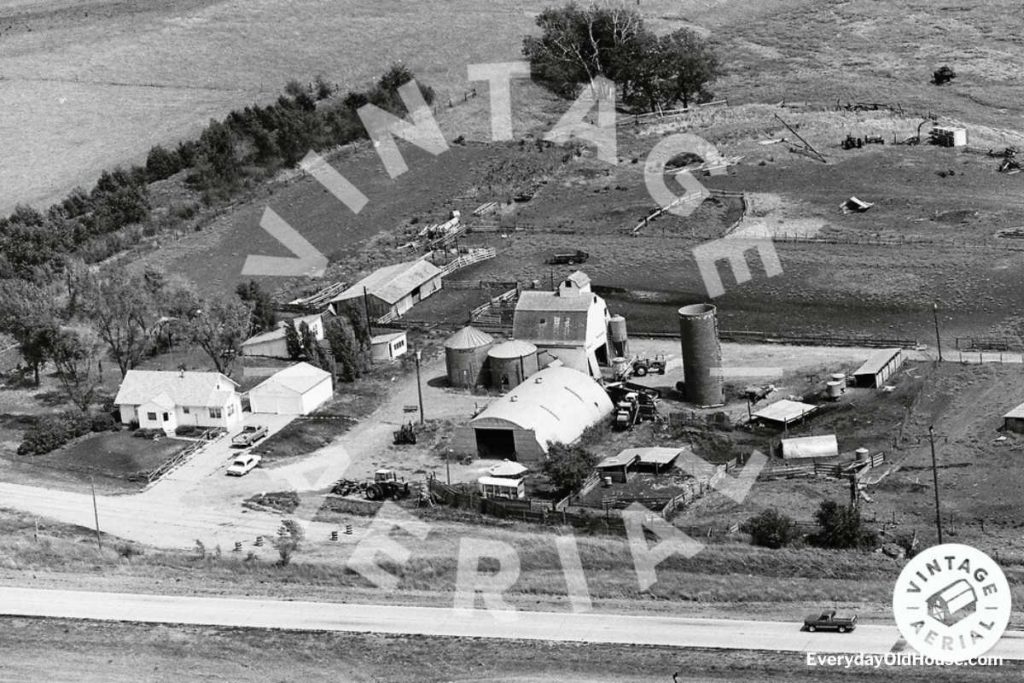
State and City Aerial Archives
Some larger cities have their own online historic maps that you can search by address. In just a few minutes I was able to find websites with a plethora of old photographs for New York City, Philadelphia, and Portland, OR.
13? SepiaTown
Note: When I wrote this post in 2022, the website was active. However, in 2023, it was no longer there…. But I’ve decided to keep their info here just in case it gets revived…
SepiaTown is another online repository whose goal is “to provide both a window to the past by merging photography, geography, and technology, as well as a forum for institutions and individuals to share and map historical images”.
Wow – that’s a mouthful. But you get the point.
Similar to What Was There, SepiaTown welcomes archival images to be uploaded and linked to a map for folks to explore.
Personally, I found more photos of commercial buildings (versus residential historic houses) uploaded to this site, but there is still opportunity to come across an old photo of your house.
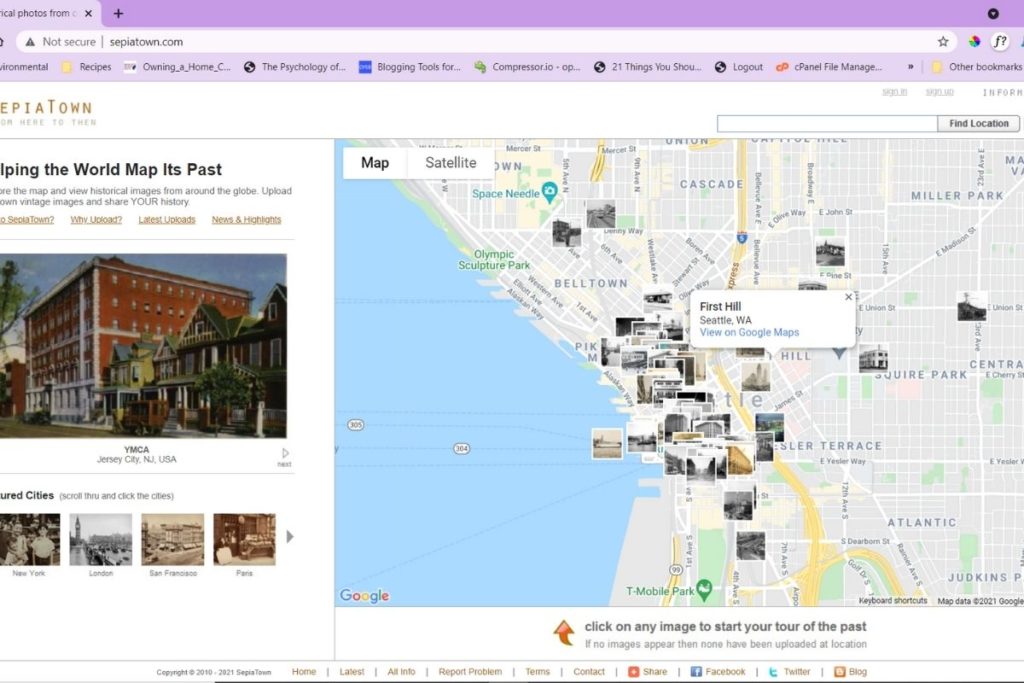
As a warning, this is another website that you could easily go down the rabbit hole and emerge hours later…. I speak from personal experience!
Printable Checklist
Need a cheat sheet to keep track of all these resources? Well, I’ve got you covered with this downloadable pdf! Where appropriate, I added links directly to sources to make things faster and easier.
[UPDATE: LINKS ON CHECKLIST CURRENTLY NOT WORKING. WILL UPDATE ASAP]
Did You Find an Old Photo of Your Home?
If so, CONGRATS!!! Please let me know – I’d love to share!
Disclaimer
I am not a professional home genealogist (nor play one on tv….). However, as a environmental consultant for 10+ years, I researched the history of 100+ commercial properties for property owners, potential buyers, and real estate developers. I utilized a variety of historical databases and resources – historical maps, government databases, interviews, and property visual clues – to create a picture of a property’s past.
My mission is to use these consulting skills (combined with genealogy classes) to help other homeowners to research the history of houses.
Note that my experience is limited to the United States. For European homes, I suggest this website.
Related Posts
***This post was featured on Grandma’s House DIY Link Party #268!***
Want to be the first to know about new posts? Be sure to follow me on Pinterest, Facebook, Instagram or Twitter of even Etsy! Or better yet… Subscribe below!
My monthly (admittedly sometimes more, sometimes less….) emails are like receiving a unexpected letter from an old friend WITHOUT needing to put on your slippers and walk out to your mailbox…. See? I got ya, my friend!)
[Note: My posts are proudly connected to these amazing link parties full of DIY ideas and inspiration!]


